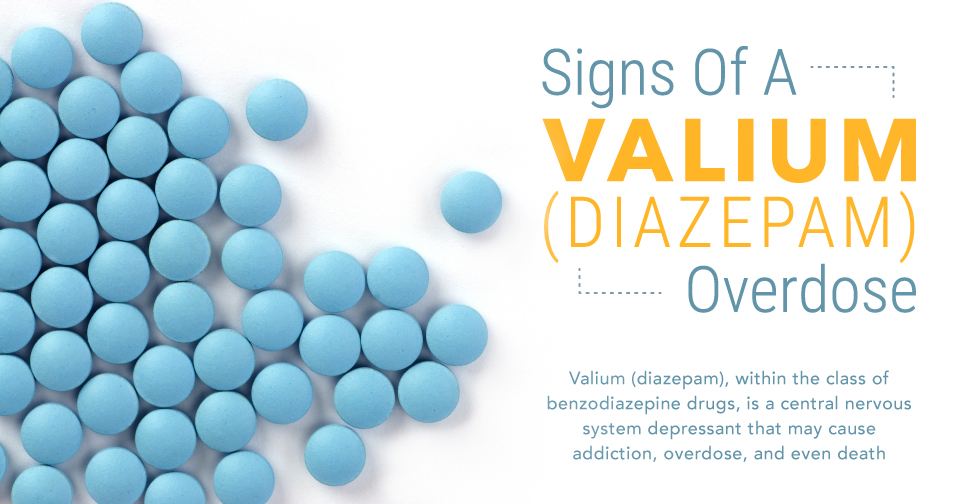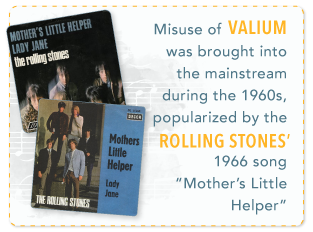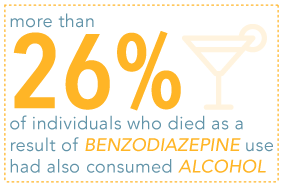
Valium is the most popular brand-name version of diazepam, which is a benzodiazepine belonging to the central nervous system (CNS) group of depressants. CNS depressants slow the central nervous system. Diazepam, whether in a generic benzodiazepine form, or as any number of other brand-name alternatives, is available in the United States only via prescription. This drug is used to treat a variety of conditions, including anxiety, vertigo, multiple sclerosis, alcohol withdrawal, muscle spasms, sleep problems, compulsive disorder, schizophrenia, panic attacks, and seizures.
Valium is a central nervous system (CNS) depressant within the benzodiazepine class of drugs and is most commonly used to treat anxiety, muscle spasms, seizures, and symptoms of alcohol withdrawal. It is often used in combination with other drugs, and is rarely used as a sole treatment modality for mental illness diagnoses, according to News-Medical.net. Once touted as a wonder drug, Valium can be highly addictive and cause overdose. It is one of the most abused prescription drugs in many countries, according to the New England Journal of Medicine (NEJM).
What Is The Prevalence Of This Drug?
The NEJM article describes the “enormous popularity of Miltown (meprobamate) in the 1950s, of Librium (chlordiazepoxide) and Valium (diazepam) in the 1960s and early 1970s, and of selective serotonin-reuptake inhibitors (SSRIs) such as Prozac (fluoxetine) today.” During Valium’s peak prescription period of the 1960s and 1970s, “more than 100 million prescriptions for (psychotropic drugs) were filled annually, and about 15 percent of the population reported having used one of them during the preceding year.”
A 2015 JAMA Psychiatry article reported that more than 5 percent of Americans aged 18 to 80 had used Valium or other benzodiazepines. Valium use was twice as likely to occur in females, with persistent and long-term use of Valium also more common among older adults; abuse and addiction was more acute among younger users.
What Are The Signs Of Abuse
Misuse of Valium was brought into the mainstream during the 1960s, popularized by the Rolling Stones’ 1966 song “Mother’s Little Helper,” in which Valium was referred to by the same name. Signs of misuse and abuse of Valium include the persistent presence of symptoms common among Valium users, including:
 Persistent drowsiness
Persistent drowsiness- Dizziness, vertigo, and headaches
- Anxiety and fatigue
- Depression and irritability
- Insomnia, nightmares, and other sleeping problems
- Impaired judgment and memory problems
- Stomach problems
- Confusion and forgetfulness
- Blood in stool or urine
- Seizures and hallucinations
- Dry mouth or excessive saliva
- Muscle control problems
- Constipation
- Speech and vision problems
Other serious problems that can develop with persistent Valium use, and especially with misuse, are thoughts of suicide, liver problems (including jaundice), bladder problems (incontinence or increased frequency), and changes in sex drive.
Addictive behaviors may also develop and could be seen in a person becoming obsessed with obtaining Valium; stealing prescription drugs from friends and family members; losing interest in friends, family and hobbies; and visiting more than one doctor and receiving multiple prescriptions (or even forging prescriptions).
Are There Additional Symptoms In Teens?
Aside from physical manifestations, teenagers may exhibit additional symptoms, usually social in nature, like a change in friends, trouble at school, increased use of other substances (including alcohol and tobacco), and self-harming behaviors like cutting.
Most teens admit that the primary source of their drug supply is the home—typically in the form of prescription drugs such as Valium. In 2013, for instance, more than 21 percent of high school seniors admitted to non-medical use of a prescription drug in their lifetimes, according to the National Institute on Drug Abuse for Teens. Many teens dangerously believe prescription drugs are safer than street drugs.
Purchasing diazepam and Valium—as well as other drugs such as Xanax—online is also notoriously easy. A simple search yields hundreds of sites worldwide where drugs that typically require a prescription are available to buyers of all ages.
What Are The Symptoms of Overdose?
Signs of Valium or diazepam overdose (OD) may mimic misuse/abuse signs, and generally involve the persistent or constant presence of typical Valium-use symptoms according to MedlinePlus, or the increased severity of symptoms, such as:
- Lips and nails turning blue or swelling
- Blurred or double vision
- Stupor, decreased alertness, and drowsiness
- Low blood pressure or irregular heartbeat
- Slow, labored, or cessation of breathing
- Increased or severe confusion, depression, and dizziness
- Extreme excitability and agitation
- Constant hiccups and trouble swallowing
- Rapid eye movement, especially side to side
- Upset stomach
- Fatigue or excessive and persistent tiredness
- Muscle control problems, spasms, tremors, or uncoordinated movements
- Rashes
If you witness a Valium overdose (or any type of drug overdose), you should call 911 and be ready to provide the dispatcher with patient information, such as the person’s age, weight, and medical condition; the approximate time the OD occurred; the amount and type of all drugs consumed, including alcohol; and whether any drugs involved were prescribed to the person who overdosed.
Does Valium Interact With Other Drugs?
Taking Valium with other drugs or with alcohol greatly heightens the risk of an overdose. Mixing Valium and alcohol can increase side effects (such as confusion, stupor, motor skills, and disorientation) and severely impacts chances for addiction and overdose, including loss of consciousness, brain damage, coma, and even death. Similar dangers exist when mixing Valium with heroin, cocaine, methamphetamine, tranquilizers, and opioids like Vicodin, Norco, Percocet, OxyContin, and Dilaudid.

The Centers for Disease Control and Prevention (CDC), in a 2014 report, stated that Valium and other benzodiazepines were responsible for more than 400,000 emergency room visits in 2010. Patients who overdosed on Valium were found to have mixed alcohol with the drug, exaggerating the medication’s sedative effects. In fact, the “Morbidity and Mortality Weekly Report” asserts that more than 27 percent of emergency room visits involving benzodiazepines also involved alcohol and that more than 26 percent of individuals who died as a result of benzodiazepine use had also consumed alcohol.

As with Valium, opioids depress the central nervous system, but have a much more powerful effect on heart and respiration rates. Taken alone, it is less common for Valium to cause serious respiratory problems and/or an exceedingly low heart rate. When taken in conjunction with opioids, however, the CNS depression due to Valium are increased. The heart rate slows to the point that the brain is denied blood and oxygen and respiration becomes so shallow that the lungs don’t provide oxygen to the body, making death a real risk. Also, the CDC reports that Valium and other benzodiazepines, often in conjunction with other drugs, accounted for 31 percent of suicides involving prescription drugs and alcohol.
Additionally, the Substance Abuse and Mental Health Services Administration cautions that people with substance abuse problems, like alcohol addiction or opiate abuse, are more likely to misuse Valium; a large proportion of people enrolled in substance abuse treatment programs were found to abuse benzodiazepines in combination with alcohol and other drugs.
Withdrawal And Treatment
Valium withdrawal symptoms may be physical, mental, or both. Signs may include tremors, stomach cramps, muscles aches and cramps, excessive sweating, and convulsions. Addiction and misuse symptoms also may persist, like agitation, depression, fatigue, and confusion.
In both cases of medical and illicit use, increased doses may be required to achieve the effect or even the same “high.” This response is known as tolerance, and it can eventually lead to dependency. Within properly prescribed medical use, tolerance, one of the hallmarks of Valium abuse and addiction, typically occurs within six months of the commencement of Valium use, according to the Center for Substance Abuse Research at the University of Maryland. Tolerance may occur faster within situations of abuse. Once the central nervous system adjusts to Valium dosage levels, dependency and/or addiction can ensue.
Let Us Help You Protect Your Life
If you think you recognize signs of Valium abuse or addiction in yourself, a friend, or loved one, get ahead of the curve. Don’t wait for tragedy to strike. Get help now. Contact us at DrugRehab.org.
For More Information Related to “Signs Of A Valium (Diazepam) Overdose” Be Sure To Check Out These Additional Resources From DrugRehab.org:
- Signs Of A Xanax Overdose
- The Most Commonly Abused Prescription Drugs In America
- Wake-Up Call for Parents: Is Your Teen at Risk for Prescription Drug Abuse?
- Types Of Prescription Drug Addictions
- The Effect Of Benzodiazepines On The Brain
- The Dangers Of Mixing Prescription Opiates And Benzodiazepines
Sources
News-medical.net — Valium
MedlinePlus — Diazepam overdose
National Institutes of Health — Medication-Assisted Treatment for Opioid Addiction in Opioid Treatment Programs
Psychiatric Medication Awareness Group — History of Benzodiazepines: What the Textbooks May Not Tell You
Center for Substance Abuse Research — Benzodiazepines

